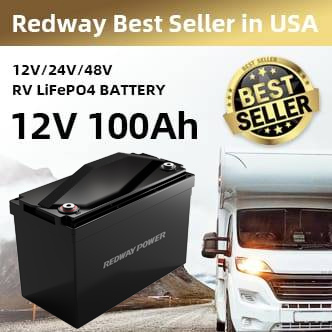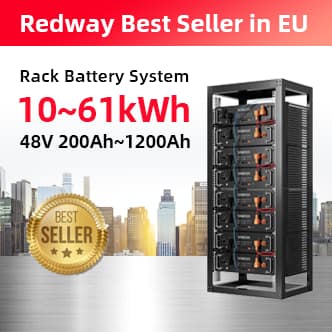In the fast-paced world of logistics and warehouse management, maximizing storage efficiency while maintaining operational flexibility is a constant challenge. Enter push back racking—a high-density storage solution revolutionizing how businesses manage inventory. This article explores the mechanics, benefits, and future trends of push back racking systems, providing actionable insights for warehouse operators seeking to optimize their space and workflows.
Understanding Push Back Racking: The Basics
Push back racking is a dynamic storage system designed to store multiple pallets in a single vertical lane using inclined carts or rails. When a new pallet is loaded, it pushes existing ones backward, operating on a Last-In, First-Out (LIFO) principle. This design is ideal for facilities with medium to high inventory turnover, such as e-commerce fulfillment centers or beverage distributors, where space utilization and quick access are critical. Unlike traditional selective racks that require dedicated aisles for each pallet, push back systems consolidate storage into deeper lanes, reducing aisle space by up to 50%.
Key Benefits of Push Back Racking Systems
1. Space Optimization and Cost Savings
By minimizing aisle requirements, push back racking allows warehouses to store 25–30% more pallets within the same footprint. For urban warehouses where real estate costs are prohibitive, this translates to significant savings. A 2022 case study by Warehousing Logistics International highlighted a beverage distributor in Chicago that increased storage capacity by 28% without expanding their facility, saving $500,000 annually in potential leasing costs.
2. Enhanced Operational Efficiency
The reduced need for forklift navigation between aisles cuts travel time by up to 15%, lowering fuel and labor costs. For example, a Midwest automotive parts supplier reported a 12% reduction in operational expenses after switching to push back systems, attributing this to faster loading cycles and fewer equipment movements.
3. Flexibility for Diverse Inventory Needs
Push back racks accommodate varying pallet sizes and weights, making them ideal for industries like retail and pharmaceuticals, where SKU dimensions fluctuate. The system’s adjustable lane depths (typically 2–5 pallets deep) allow warehouses to customize storage based on product demand cycles.
Push Back vs. Drive-In vs. Selective Racking: A Detailed Comparison
Choosing the right storage system depends on inventory turnover rates, accessibility needs, and budget. Here’s how push back racking stacks up against alternatives:
| Feature | Push Back | Drive-In | Selective |
|---|---|---|---|
| Access Method | LIFO | FIFO | FIFO |
| Storage Density | High (2–5 pallets deep) | Very High (6+ pallets deep) | Low (1 pallet deep) |
| Forklift Requirements | Standard | Specialized | Standard |
When to Choose Push Back Racking:
- Medium-Turnover Goods: Ideal for SKUs rotated 10–20 times monthly, such as seasonal apparel or electronics.
- Safety Priorities: Unlike drive-in systems, push back racks eliminate the need for forklifts to enter storage lanes, reducing collision risks.
- Budget Constraints: At $800–$1,500 per pallet position, push back systems offer a cost-effective middle ground between selective racks and automated alternatives.
Safety and Maintenance: Best Practices
Critical Safety Measures
Push back racking requires strict adherence to safety protocols to prevent accidents:
- Weight Distribution: Unevenly loaded pallets can cause cart tilting. A 2021 incident at a Texas warehouse was traced to imbalanced pharmaceutical pallets, emphasizing the need for employee training.
- Forklift Training: Operators must master precision placement to avoid damaging rails. OSHA recommends quarterly refresher courses for forklift handlers.
- Structural Inspections: Bi-annual checks of rails, carts, and connectors help identify wear before failures occur.
Maintenance Checklist
| Task | Frequency | Details |
|---|---|---|
| Lubricate Rails | Quarterly | Use high-grade lubricants to prevent friction-related wear. |
| Wheel Replacement | 3–5 Years | Inspect polyurethane wheels annually for cracks. |
| Load Audits | Annually | Verify compliance with manufacturer weight limits. |
Sustainability and Push Back Racking
Modern warehouses are increasingly prioritizing eco-friendly practices, and push back systems contribute significantly:
- Reduced Energy Use: By minimizing forklift travel, warehouses can cut energy consumption by 18%, as noted in a 2023 Green Storage Solutions report.
- Recyclability: Steel components are 95% recyclable, diverting 12–15 tons of material from landfills per 10,000-pallet system.
- LEED Certification: Push back racking supports LEED credits by reducing embodied carbon and land use. EcoStorage Co. achieved net-zero status combining these racks with solar-powered forklifts.
The Future of Push Back Racking: Innovations to Watch
Technological advancements are reshaping push back systems:
- Automated Retrieval: Companies like AutoStore integrate robotic arms with push back racks, reducing picking errors by 34% in trials.
- IoT Sensors: Real-time monitoring of load weights and rail conditions enables predictive maintenance, with AI tools forecasting rail wear at 92% accuracy.
- Modular Designs: Adjustable lane depths (2–6 pallets) let warehouses adapt to seasonal demand shifts within 48 hours.
“Push back racking is a game-changer for balancing density and accessibility. At Redway Logistics, clients reduced storage costs by 30% by aligning lane depth with inventory velocity.”
— Redway Logistics Engineer
Conclusion: Is Push Back Racking Right for Your Warehouse?
Push back racking offers a compelling blend of space efficiency, safety, and adaptability for medium-turnover warehouses. By implementing robust maintenance protocols and leveraging emerging technologies, businesses can future-proof their operations while advancing sustainability goals.
FAQs
- Q: Can push back racking handle perishable goods?
- A: Yes, but only if stock rotation aligns with LIFO. For FIFO perishables like dairy, consider drive-in systems.
- Q: What industries benefit most from push back racking?
- A: E-commerce, pharmaceuticals, and consumer goods sectors with diverse SKU sizes and medium turnover rates.
- Q: How does push back racking handle high-turnover items?
- A: While optimized for medium turnover, pairing push back with warehouse management software (WMS) can streamline access for faster-moving SKUs.



